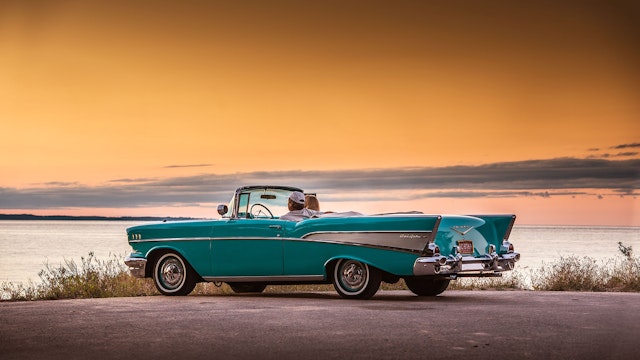All prices shown here are based on various data sources, as detailed in About Our Prices. The Hagerty Price Guide is for informational purposes only and is not intended as financial advice. More information on how forecast models are calculated can be found on Forecasted Values page. For additional information and a complete description of benefits, visit hagerty.com/legal. Purchase of insurance not required for membership in HDC. Hagerty, Hagerty Valuation Tools & Hagerty Drivers Club are registered trademarks of The Hagerty Group LLC, ©2026 The Hagerty Group, LLC. All Rights Reserved. The Hagerty Group, LLC is a wholly owned subsidiary of Hagerty, Inc.
Select the Chevrolet Bel Air model year you want to research current market prices for
Even though it was on dealership showroom floors for a quarter-century through the mid-1970s, it’s hard to imagine a car that defines American car styling in the mid-1950s more perfectly than the Bel Air. When you say “57 Chevy” you’re probably talking about the Bel Air and imagining Elvis Presley behind the wheel (while Marilyn Monroe rides shotgun)—it’s that iconic.
The Bel Air originally emerged in 1950 as a two-door hardtop inspired by Cadillac’s Coupe DeVille, and evolved through the early ’50s into a model that offered convertible, four-door and station wagon models. The Bel Air’s second generation is where the car’s styling made its mark, and Chevy knew it, dubbing it “The Hot One.” The Turbo-Fire V8 under the hood backed up the claim, as did the new jet-age tailfins, Ferrari-inspired grille and plenty of chrome inside and out. What’s more: its ease of modification made it a hit on the emerging hot rod scene.
The Bel Air’s moment to shine was bright but brief. A new generation in 1958 made the car bigger and made for a smoother, more comfortable ride, with the new Impala (a “halo version” of the Bel Air) earning its fair share of attention. As the Bel Air progressed through the ’60s and early ’70s it shared market space with other mid-tier Chevys like the Impala, the Biscayne and the Caprice. While it would live on for a few more years in Canada, Chevy called it quits on the Bel Air in America in 1975.
